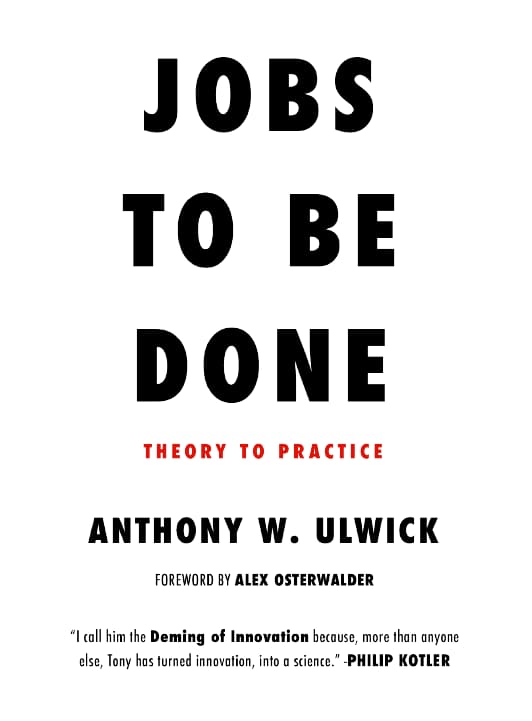Jobs to be Done: Theory to Practice
Anthony W. Ulwick

“Why do so many innovation projects fail? What are the root causes of failure? How can they be avoided? Since 1990, Tony Ulwick has pioneered an innovation process that answers these questions. In 1999, Tony introduced Clayton Christensen to the idea that “people have underlying needs or processes in their lives, that they are addressing in some way right now”—an insight that was to become Jobs-to-be-Done Theory.
For 25 years, Ulwick and his company, Strategyn, have helped over 400 companies, applying Jobs-to-be-Done Theory in practice with a success rate of 86%—a 5-fold improvement.
“Ulwick has taken the guesswork out of innovation,” says the ‘father of modern marketing,’ Philip Kotler, S. C. Johnson Distinguished Professor of International Marketing at the Kellogg School of Management, Northwestern University. “He has done this by introducing us to Jobs-to-be-Done theory, and converting it to practice using his rigorous innovation process known as Outcome-Driven Innovation.
I call him the Deming of Innovation because, more than anyone else, Tony has turned innovation into a science,” adds Kotler.”
Key Summary
“Jobs to be Done: Theory to Practice” is a book by Anthony Ulwick that explores the Jobs to be Done framework, which helps organizations understand why people buy and use products. The author argues that by focusing on the “job” a customer is trying to get done, companies can create products and services that truly meet customer needs and drive growth.
Takeaways
1. Jobs to be Done is a framework that helps companies understand why people buy and use products.
2. Focus on the job a customer is trying to get done, rather than the product they are using to get it done.
3. Understand the functional, emotional, and social aspects of the job and how they impact customer behavior.
4. Identify unmet customer needs and develop new products and services to address these needs.
5. Conduct customer research to gather data on customer jobs, pain points, and desired outcomes.
6. Create personas to represent different types of customers and their jobs, pain points, and desired outcomes.
7. Use customer data to prioritize product development efforts and make informed design decisions.
8. Test and validate product concepts and prototypes with customers to ensure they meet their needs.
9. Continuously evaluate and refine your products and services based on customer feedback and market trends.
10. Foster a customer-centric culture that prioritizes customer needs and drives growth and innovation.